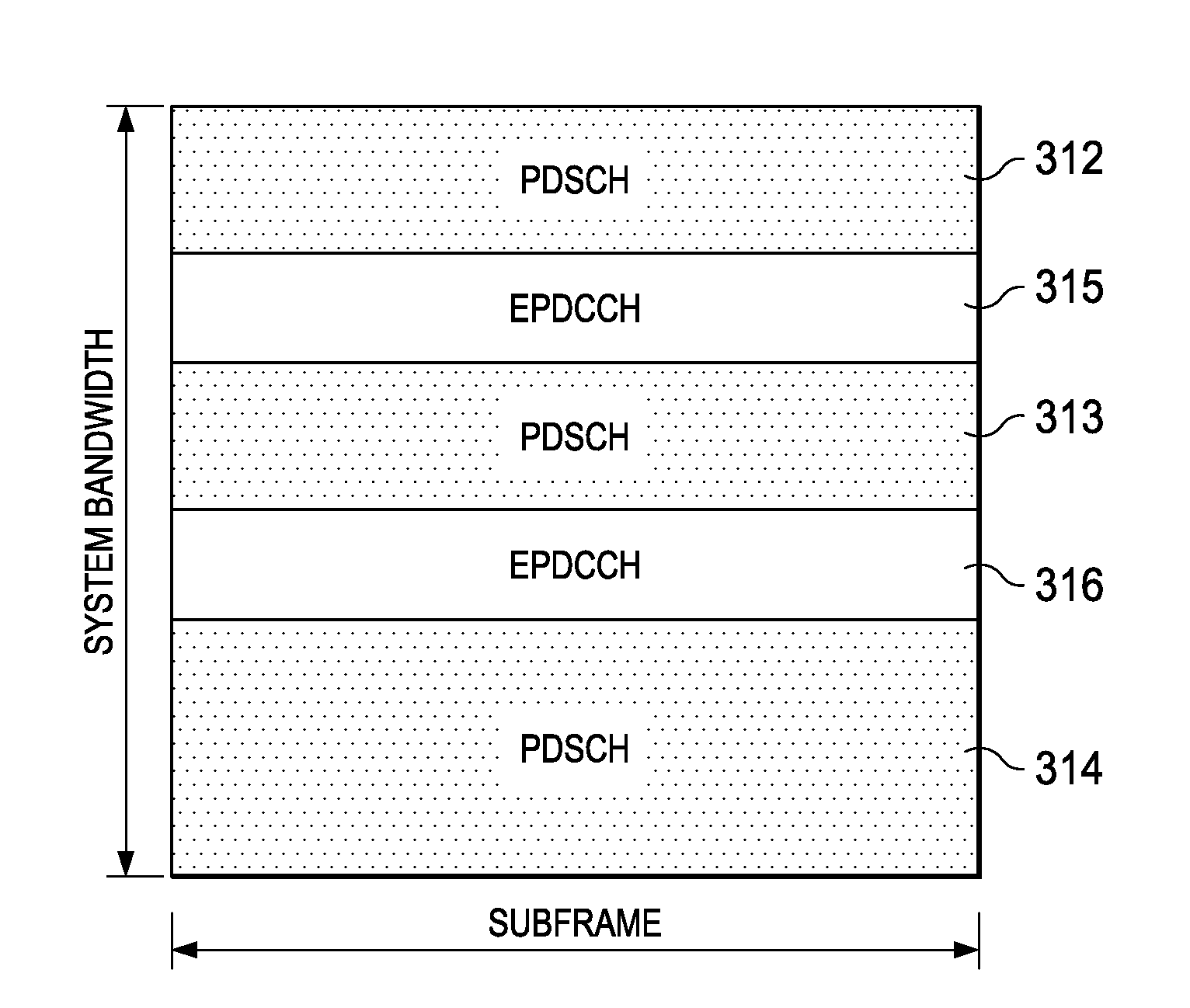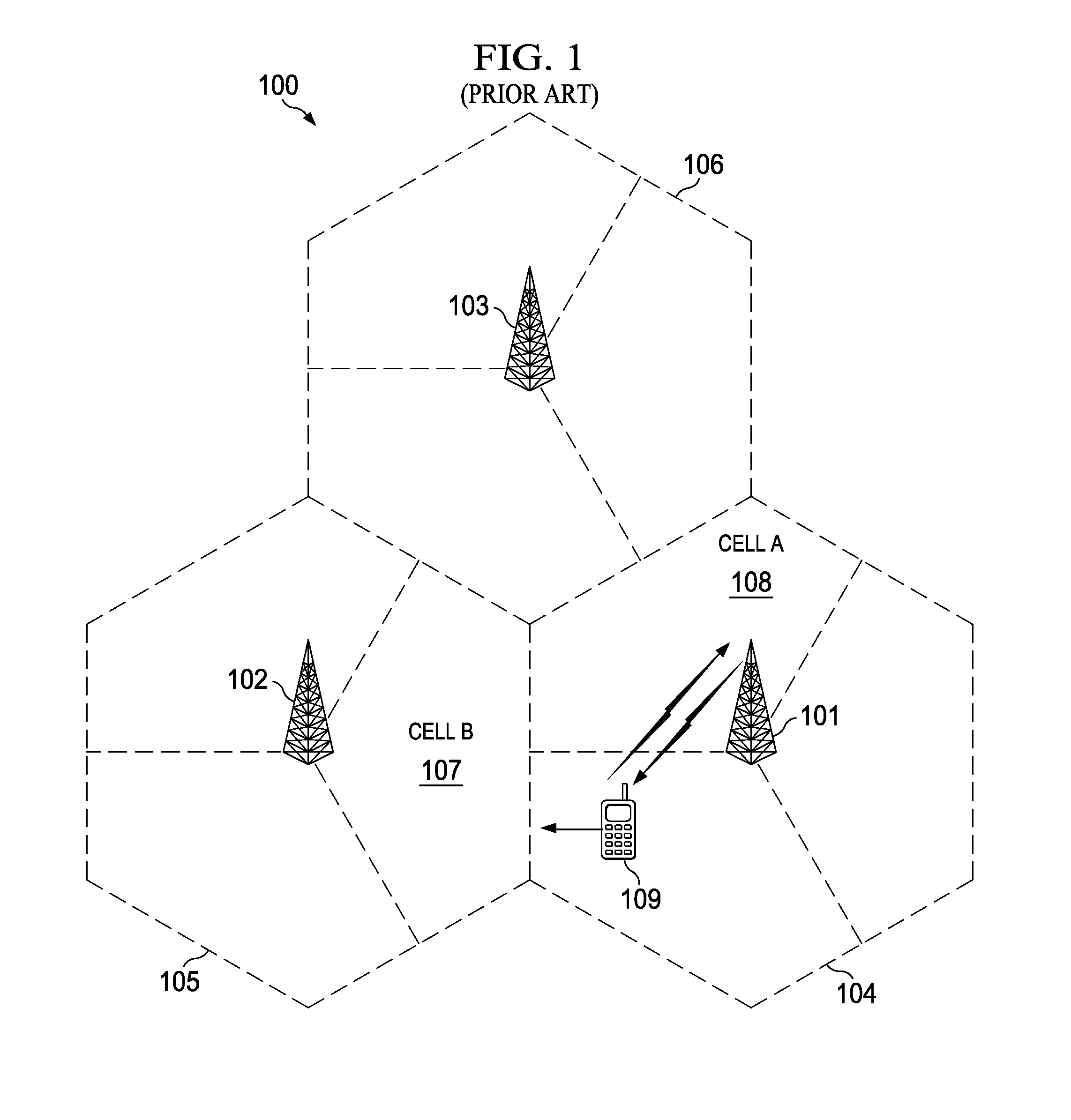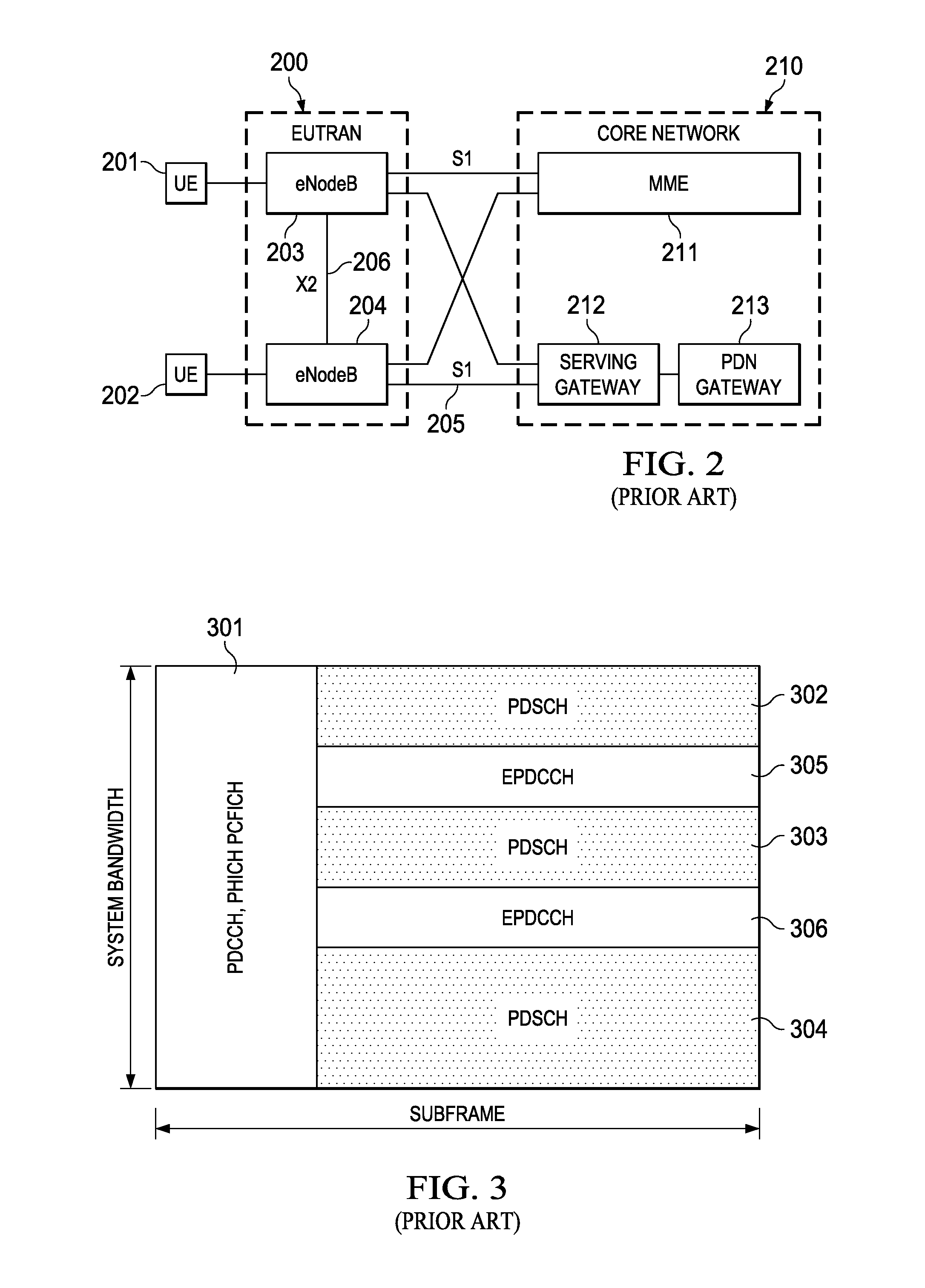Methods for energy-efficient unicast and multicast transmission in a wireless communication system
- Summary
- Abstract
- Description
- Claims
- Application Information
AI Technical Summary
Benefits of technology
Problems solved by technology
Method used
Image
Examples
Embodiment Construction
[0020]As cellular networks evolve to cope with this explosive growth in cellular data traffic it has been observed that bottlenecks occur because much of the traffic is localized to hotspots in both indoor and outdoor deployment scenarios. Heterogeneous networks are increasingly becoming popular, wherein small cells controlled by low power base stations are deployed to boost capacity in hotspots and / or improve cellular coverage. In the Third Generation Partnership Project (3GPP) Long Term Evolution (LTE) system, a base station, also known as an evolved NodeB (eNB), always transmits a cell-specific reference signal (CRS) and a time-multiplexed Physical Downlink Control Channel (PDCCH). But always transmitting a cell-specific reference signal and a time-multiplexed Physical Downlink Control Channel (PDCCH) becomes problematic as traffic and demand increases.
Description of an Evolved Transmission Format
[0021]The 3GPP radio access network (RAN) standardization body is taking steps to ad...
PUM
 Login to View More
Login to View More Abstract
Description
Claims
Application Information
 Login to View More
Login to View More - R&D
- Intellectual Property
- Life Sciences
- Materials
- Tech Scout
- Unparalleled Data Quality
- Higher Quality Content
- 60% Fewer Hallucinations
Browse by: Latest US Patents, China's latest patents, Technical Efficacy Thesaurus, Application Domain, Technology Topic, Popular Technical Reports.
© 2025 PatSnap. All rights reserved.Legal|Privacy policy|Modern Slavery Act Transparency Statement|Sitemap|About US| Contact US: help@patsnap.com



